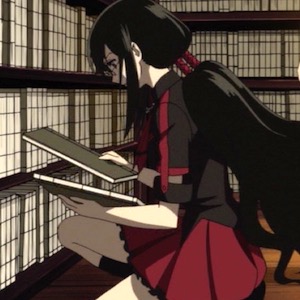Interpreting Anime
by Christopher Bolton
For Instructors

Interpreting Anime is designed for faculty, students, and sophisticated fans, and it can function either as an introduction to anime studies or as a way of extending your own thinking about this medium. It also grows out of my own teaching, and for instructors planning a course that incorporates anime, the book has a number of features designed to make it useful in the classroom:
Coverage.
Each chapter focuses intensively on one or two feature-length films or short (2-hour) series that can be covered in a week of class. These include some of the most canonical titles from the first 25 years of the current anime boom, and cover many of the medium's most important directors and studios.Critical Breadth.
The book strikes a balance between discussing the cultural and historical contexts in which these works appeared, the technological and industry contexts in which they were produced, and a range of critical theory-based approaches. All these are presented in a clear, jargon-free way that tries to shed real light on the works at hand.Close Reading.
Above all, the book emphasizes and models careful close reading of anime's formal elements—visual, aural, and structural—in the service of helping readers build their own interesting, original interpretations.Other Popular Media.
The media comparisons in each chapter introduce readers to a range of other visual and literary media (from 18th-century Japanese theater to contemporary manga), providing a broader, richer understanding of Japanese popular culture than students might get from anime alone.Organization.
Each chapter of Interpreting Anime is freestanding, for faculty who want to teach just one or two films; but the chapters also build on each other to give readers of the whole book a strong sense of how anime and anime studies have grown and changed over the last three decades.Praise from Critics
for the book's classroom potential:"Bolton presents multiple intriguing strategies for close reading of anime films and television series…. His lucid writing style and clear summaries of critical theory make Interpreting Anime well suited for undergraduate teaching." –Deborah Shamoon, Monumenta Nipponica
"Narrative and formal analysis merge almost seamlessly, which allows the reader to maintain a holistic understanding of each work he discusses. One of Interpreting Anime's best attributes along these lines is that it is eminently readable. The book is delightfully free of the excessive technological and theoretical jargon that tends to accompany even the best scholarship in the field. Indeed, I was immediately bookmarking chapters for use in future courses on animation because Bolton’s clarity lends itself perfectly to an undergraduate syllabus." —Julia Alexsyeva, Animation
"Perfect for students searching for a different way to look at the format…, the book covers a range of different types of anime, providing important context for each." —Kaia MacLeod, Film Matters undergraduate film journal
"Provides an excellent illustration of the way in which theory can be utilized in the analysis of anime. …There is no doubt that this book will find a home in the reading lists of most courses on anime, and provide both students and teachers of the subject with encouragement and stimulation." —Thomas E. McAuley, East Asian Journal of Popular Culture
If you adopt the book for your own class, I am eager to have your feedback. Please see my home page for my contact information.